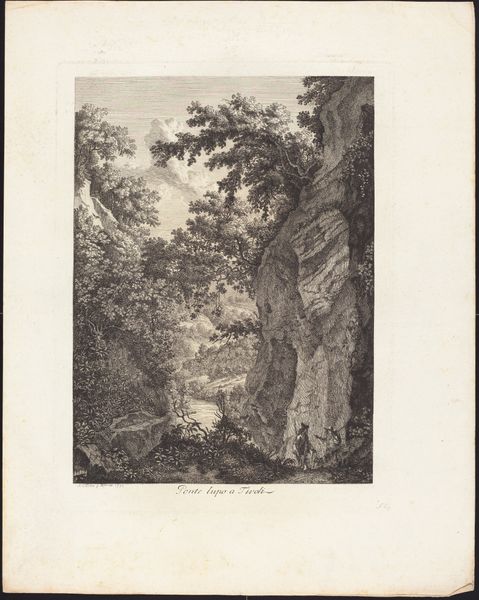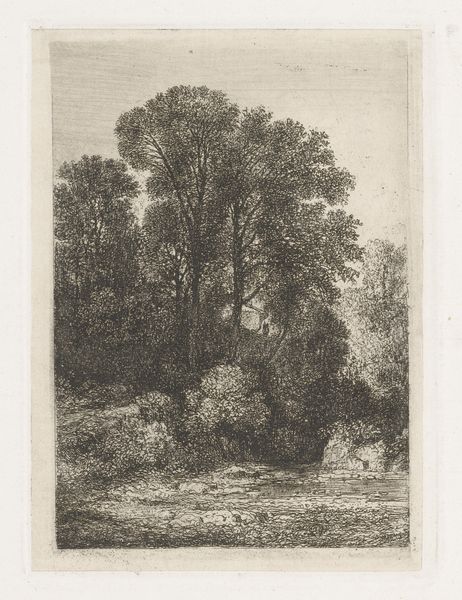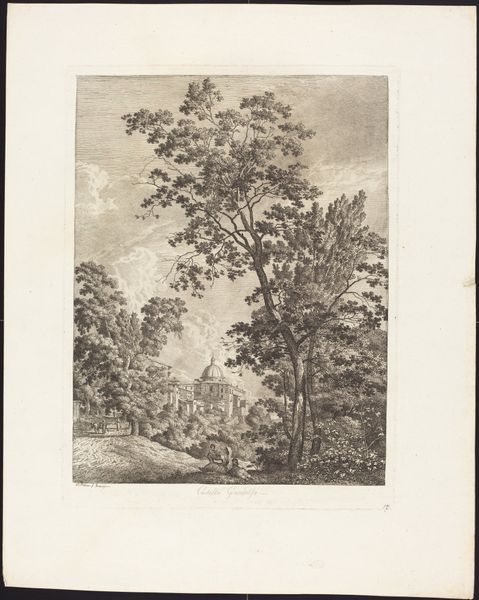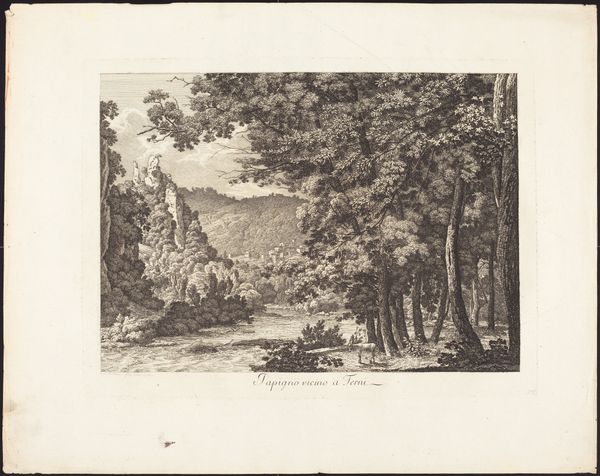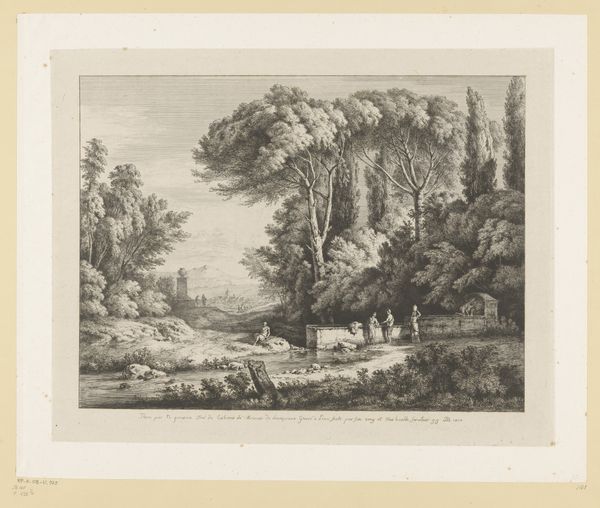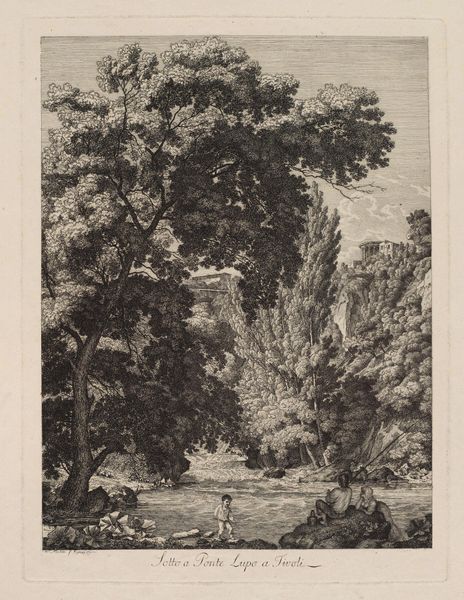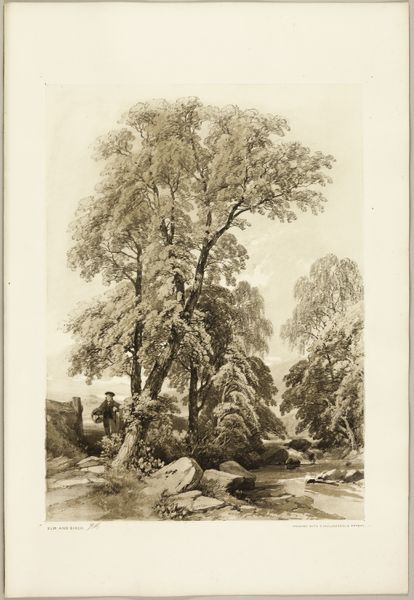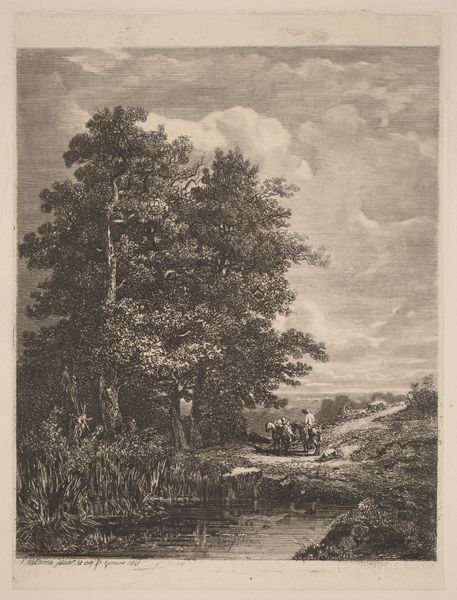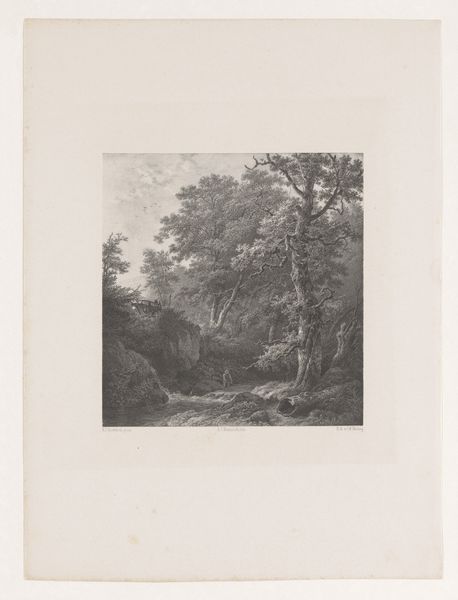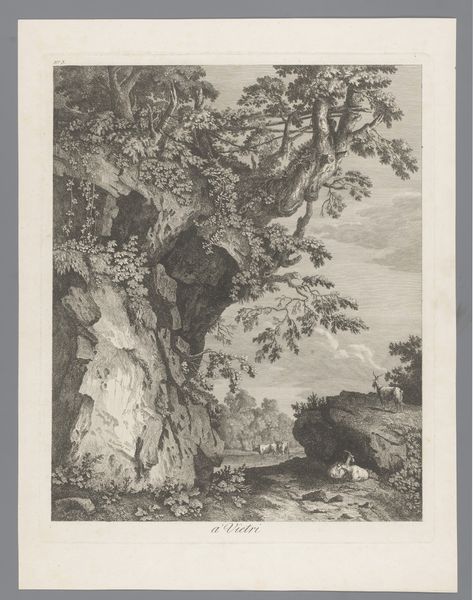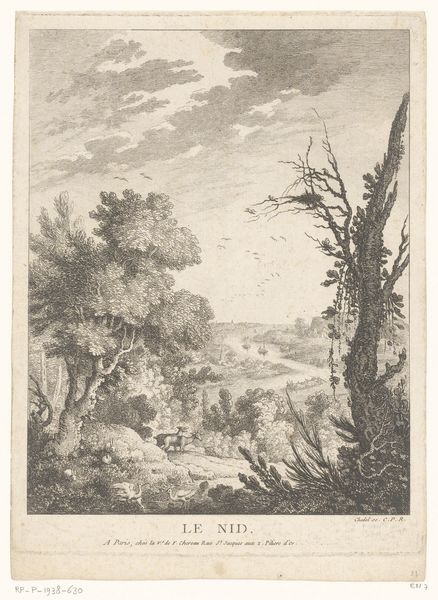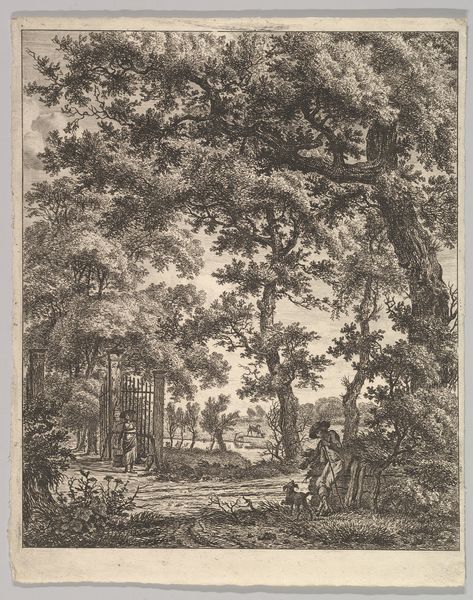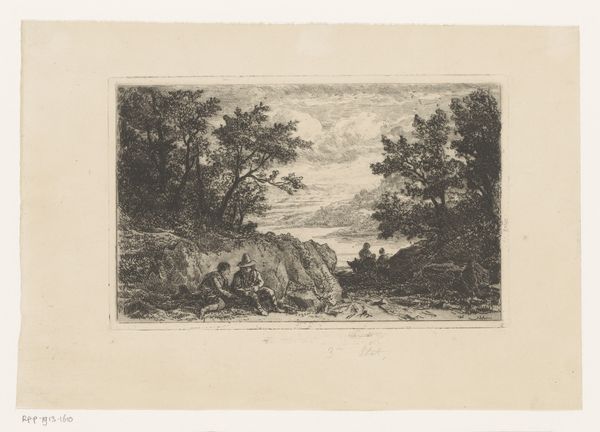
print, etching
#
pen and ink
#
ink drawing
#
pen drawing
# print
#
etching
#
landscape
#
romanticism
#
realism
Dimensions: plate: 37.2 x 28.1 cm (14 5/8 x 11 1/16 in.) sheet: 49.2 x 39.2 cm (19 3/8 x 15 7/16 in.)
Copyright: National Gallery of Art: CC0 1.0
This is Jacob Wilhelm Mechau's "Sotto a Ponte Lupo a Tivoli", a print rendering of the Italian countryside. Mechau, living between 1745 and 1808, was working during a period of burgeoning Romanticism, a movement that saw artists turn to nature as a source of sublime inspiration. Here, we see a landscape imbued with a sense of pastoral beauty and tranquility. What does it mean to look at such a scene through the lens of history? How does the natural world become a stage upon which social relations play out? Look closely and you'll see figures populating the landscape; their presence complicates our reading of the scene. Notice how the figures are arranged, what they're doing, and how they relate to one another. What stories might be unfolding here, and how do they challenge or reinforce our expectations of idyllic landscapes? We should ask ourselves whose stories are being told and whose are being left out. Landscapes can tell stories about culture, identity, and power.
Comments
No comments
Be the first to comment and join the conversation on the ultimate creative platform.
